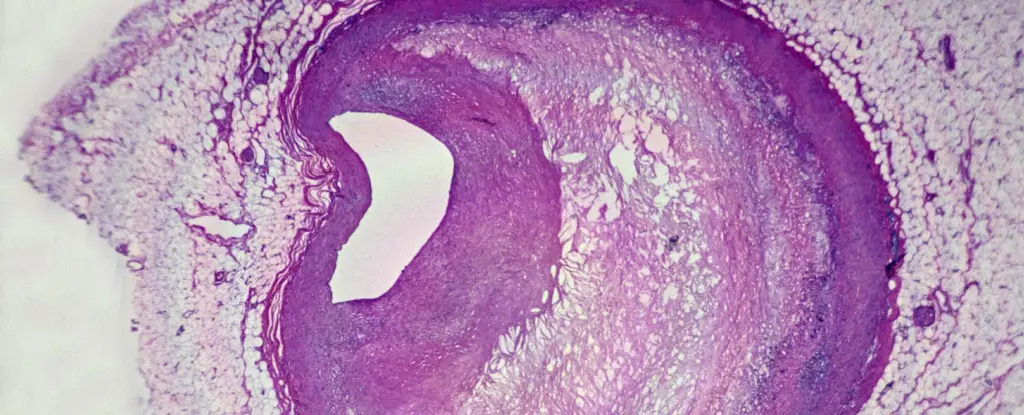In recent years, the alarming presence of microplastics has drawn increasing attention from scientists and health professionals alike. Starting from the remote corners of our oceans to the depths of our own bodies, these tiny, often invisible particles are infiltrating ecosystems and, alarmingly, our biological systems. A recent study presented by Dr. Ross Clark at the American Heart Association’s annual meeting has drawn significant attention by linking microplastics to a heightened risk of cardiovascular events such as heart attacks and strokes. This finding raises the urgent question: are we unwittingly introducing a ticking time bomb into our vascular systems?
The sheer scale of microplastic contamination is staggering, with studies suggesting it has reached various human organs, including the lungs, liver, and now, for the first time, the vascular system. Dr. Clark’s research has spotlighted the difference in microplastic concentrations found in healthy versus diseased arterial plaques, revealing a concerning correlation with symptomatic cardiovascular diseases.
Disease vs. Health: Microplastics in Arterial Plaque
Clark’s team meticulously analyzed samples from participants with varying health backgrounds, finding that the amount of microplastics contained in diseased arterial plaque was strikingly higher – up to 51 times greater in individuals experiencing cognitive issues and strokes compared to their healthy counterparts. This dramatic increase in accumulation suggests a potential link between microplastics and cardiovascular disease that can no longer be deemed merely coincidental.
The implications are profound: if these microplastics are not just passive pollutants but active participants in cardiovascular disease pathology, the consequences could be dire for public health. The fact that microplastics were found in the arterial plaque of both symptomatic individuals and those who had not yet experienced symptoms encourages a proactive health approach. The study compels us to not just recognize the presence of these pollutants but to understand their potential implications for human health.
An Unexpected Link: Gene Expression Alterations
The results of Clark’s study extend beyond mere correlation; they delve into possible biological mechanisms that may underlie microplastics’ contribution to cardiovascular risk. Intriguingly, the researchers noted alterations in gene expression within immune cells residing in high-plastic environments; this opens up a labyrinth of questions about how microplastics might be distorting immune functions related to inflammation and plaque stabilization.
One might consider how certain immune responses, meant to safeguard our vascular health, could paradoxically be hindered by the presence of microplastics. The study indicates that microplastics could be influencing critical genes associated with inflammation, which could exacerbate cardiovascular diseases. This puzzling interplay between environmental pollutants and our biological responses casts a shadow of doubt on the safety of our modern lifestyle, suggesting that the consequences of plastic pollution may extend far beyond environmental degradation.
The Need for Urgent Research and Policy Change
While the findings are both surprising and troubling, the necessity for further investigation cannot be overstated. Clark’s research, while groundbreaking, awaits peer-reviewed validation and replication, yet it sets a precedent for future inquiries into the interactions between microplastics and human health. The quest for funding will likely be pivotal to expand the scope of the study. Potential experimentation beyond the carotid arteries, including animal models to examine direct cause-and-effect relationships, may shine further light on this critical issue.
As scientists like Clark work diligently to unveil the layers of complexity surrounding microplastics, communities and health organizations must also take initiative. Public awareness campaigns regarding microplastic pollution, regulatory measures to reduce plastic production, and stringent control over plastic waste can play crucial roles in safeguarding public health. There is an urgent need for governmental and non-governmental organizations to prioritize research funding in this area, understanding that our environment and our health are inextricably linked.
In light of these groundbreaking findings, it becomes increasingly clear that the microscopic dangers of microplastics extend far into our vascular systems, creating a health crisis that could reverberate through generations. This research brings to light the pressing necessity for interdisciplinary collaboration – encompassing environmental science, medicine, and public policy – in tackling the plastic epidemic. Without swift action, the ongoing infiltration of microplastics into our bodies represents not just an environmental concern, but a public health emergency that could alter the course of medical treatment in the 21st century.

